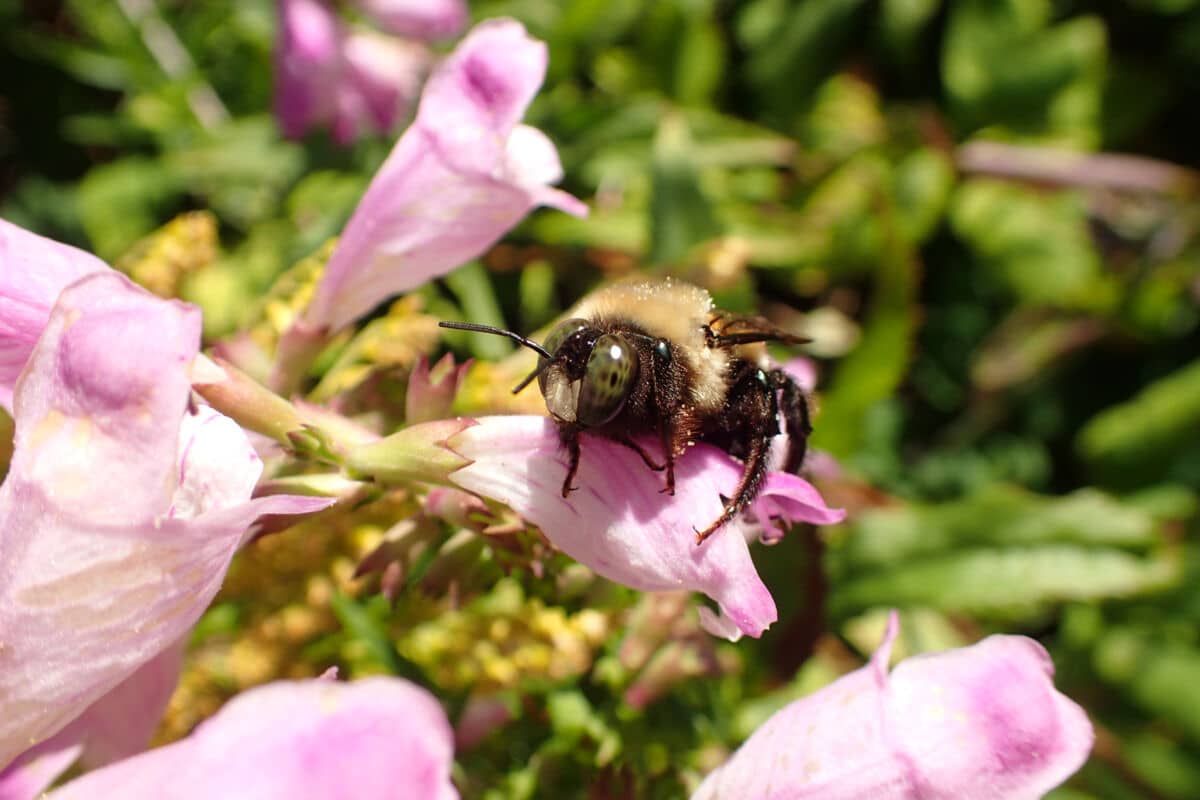What Keeps Carpenter Bees Away? 8 Ways to Repel Carpenter Bees
How do you stop carpenter bees away and prevent them from drilling into the wooden surfaces of your house? By following the simple steps we lay out in this guide.

How do you stop carpenter bees from coming and drilling into the wooden surfaces of your house? These bees can be a nuisance, especially when they come hovering around you during the spring.
Well, there’s only one proven way that can cure that. And that’s the Preventive Approach.
Prevention is always better than cure, and ‘Prevention Approach’ is a named method for keeping carpenter bees away.
It’s an effective bee control method that involves defensive measures to keep your home safe. But essentially, what you’re going to do is just discourage the bees from ever landing into your property.
And here’s how you should do it:

Build with Hardwood
Using hardwood for your house is a long-term strategy against carpenter bees.
It’s a well-known fact that carpenter bees can sink their teeth, or in this case, mandibles, into softwood. Over time, they can poke 1/2-inch holes into sidings, decks, porches, rails and other parts of the house.
However, hardwood is denser and more complex. You can build many parts of your house with this wood, or you can just use it to cover the preexisting softwood. Whatever the case, building with oak, cherry, ash and many other types of hardwood can possibly prevent carpenter bees from attacking your home.
Coat Wood With Stains, Paint or Varnish
Of course, not all of us have the luxury of redoing our house and rebuilding it with hardwood. So here’s another trick you can do to keep the bees away. Grab a couple of cans of paint, stain and varnish, and use them regularly to protect the wood around your house.
Stains, paint and varnish not only work to stop moisture from clinging into the wood. They can also ward off carpenter bees. Though the real reason behind their repelling power is not clear, it’s been speculated that the strong chemical smell from these protective coatings deter the bees from nesting.
Use Vinyl Sidings
Another effective way to keep carpenter bees away are vinyl sidings.
Houses with vinyl sidings are very common in the US. That’s because they’re cheap and effective. These flat plastic boards cover softwood and protect them from rot and excessive moisture. And for years, they’ve also been protecting those same houses from drilling bees.
Vinyl imitates traditional wooden clapboards, but they’re actually made from polyvinyl chloride (PVC) resin. So unless carpenter bees can tear through hard plastic, the wood behind these boards will totally be nest-and-tunnel-free.
Seal Holes and Cracks
From an insect’s perspective, any hole inside a sturdy surface is prime real estate. So maintaining wooden structures and furniture around the house and keeping cracks and holes sealed up can keep seeking carpenter bees away.
You can also seal preexisting carpenter bee holes if you’re keen on not just repelling them. However, there are better and kill-free ways that you can use to get rid of these insects.
Use Steel Wool
This method is a little different. It’s often used AFTER the carpenter bees has already drilled itself into your wall.
To stop female bees from raising their brood in your house again, stuff steel-wool into the hole they dug up. They can’t penetrate through steel-wool, so they’ll have to look for other places to lay new eggs. And if you’ve covered all other wooden surfaces with varnish and vinyl, they’ll have no choice but to raise new bees somewhere else.
Make Some Noise
Amp it up, literally.
It sounds weird, but many homeowners have tested this method and swear by it. All you have to do is make as much noise as loud as you can, preferably during carpenter bee nesting season. These bees have been described to hate noise, so setting up a boom box and playing raging rock songs and other upbeat melodies can drive them away.
Don’t forget to tell your neighbors about your musical bee ventures though. They may call the police on your loud bee repellent.
Use a Citrus or Tea Tree Oil Spray

Since carpenter bees have a nasty habit of visiting old nests, you can keep them away by spraying a natural repellant made from citrus fruits or tea tree oil.
This recipe from WikiHow involves cutting up citrus fruit rinds like lemon, lime and orange and boiling them in water for a few minutes. After that, all you have to do is fill up a spray bottle with the concoction and apply it on the affected areas.
As for the tea tree mixture, just mix a few drops of the essential oil into a water-filled bottle and do the same thing. If you don’t have tea tree oil, almond oil is a great substitute. Hopefully, the bees will get the message and fly elsewhere.
Buy Residual Insecticides
Finally, if you don’t have the time to coat the wooden surfaces in your house with paint/ varnish or to make a DIY citrus spray, use residual insecticides.
Residual insecticides like the Delta Dust Pest can cover the wood with a protective layer that will last for months. Now you don’t have to worry about bees and other insects from squeezing themselves into the wood. However, you do have to read the pesticide’s label to see if it’s safe for kids and pets.
Generally, a good residual insecticide along with the rest of the things we mentioned in here is what keeps carpenter bees away. Just remember though that you can’t just try one of them and call it a day. It takes a lot to keep carpenter bees out, especially if it’s spring. But you have to at least try because failing to fend one of them off will lead to more coming around.
Share this post
Save time and money on pest control
Subscribe to expert DIY pest control tips, pest control product reviews and information.




